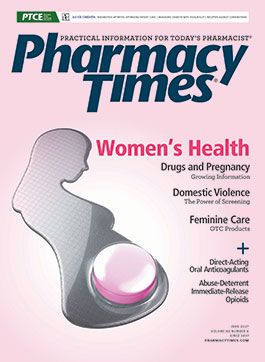Publication
Article
Pharmacy Times
Naloxone Nasal Spray More Generics on the Horizon?
Author(s):
A recent FDA draft guidance could facilitate the development of more generic naloxone hydrochloride nasal sprays.
A recent FDA draft guidance could facilitate the development of more generic naloxone hydrochloride nasal sprays.1 The 3-page document, released in April, offers guidelines for drug companies looking to win FDA approval for their generic naloxone nasal spray products. The final guidance will provide product-specific recommendations to support abbreviated new drug applications (NDAs) for generic versions.
Narcan nasal spray, which is currently the only FDA-approved nasal form of naloxone, was first approved in 2015; an updated approval in January 2017 added the availability of a 2-mg formulation. Although price increases occur most often with naloxone’s injectable form, concerns about general generic drug cost increases and the escalating opioid epidemic have created a greater urgency for better access to these lifesaving overdose medications.
In November 2016, Adapt Pharma, the manufacturer of Narcan, submitted a citizen petition that urged the FDA to refrain from approving generic versions of naloxone sprays unless they meet certain standards and demonstrate definite bioequivalence.2 Although the FDA’s response to the citizen petition is separate from the draft guidance, the latter outlines the specific standards for companies submitting NDAs of generic versions of the nasal spray.1
At a hearing about the opioid epidemic and the state of competition for addiction medicine, a House Judiciary Subcommittee heard testimonies about the rising costs of naloxone and the need for greater access and availability of opioid overdose antidotes. David R. Gaugh, RPh, senior vice president for sciences and regulatory affairs at the Generic Pharmaceutical Association, testified regarding the need for policies that support generic drug development, specifically by incentivizing competition.3 Other issues that were addressed included generic market competition, the FDA generic drug application backlog, and the need for better accessibility to lifesaving overdose medications.
In a prepared statement at the hearing, Gaugh noted the need to improve the FDA’s efficiency in reviewing generic drug applications: “We also will continue to seek sufficient clarity into the agency’s approval process to ensure that generic manufacturers can submit applications that they reliably know meet the standards set.”3
Specifically, the 3-page draft offers guidelines that will instruct companies on which studies need to be conducted to win FDA approval for their generic naloxone nasal sprays. The draft offers 2 options—in vivo or in vitro studies—and provides the specifics and differences that should be included in each, including standards for the design of bioequivalence studies. The FDA also clarifies which endpoints are expected to be met.1
When finalized, the guidance’s specific recommendations could spur more efficient NDA reviews and approvals. The FDA recommends that comments on the draft guidance be submitted by June 23, 2017, to ensure that all are considered before the agency begins its final draft.1
References
- FDA. Draft guidance on naloxone hydrochloride. https://www.fda.gov/downloads/Drugs/GuidanceComplianceRegulatoryInformation/Guidances/UCM554404.pdf. Published April 2017. Accessed April 20, 2017.
- Overly J. Adapt Pharma urges FDA hurdles for Teva overdose generic. Law 360 website. law360.com/articles/864300/adapt-pharma-urges-fda-hurdles-for-teva-overdose-generic. Published November 18, 2016. Accessed April 20, 2017.
- Committee on the Judiciary House of Representatives. Treating the opioid epidemic: the state of competition in the markets for addiction medication. House Judiciary Committee website. judiciary.house.gov/wp-content/uploads/2016/09/114-97_22123.pdf. Published September 22, 2016. Accessed April 20, 2017.







